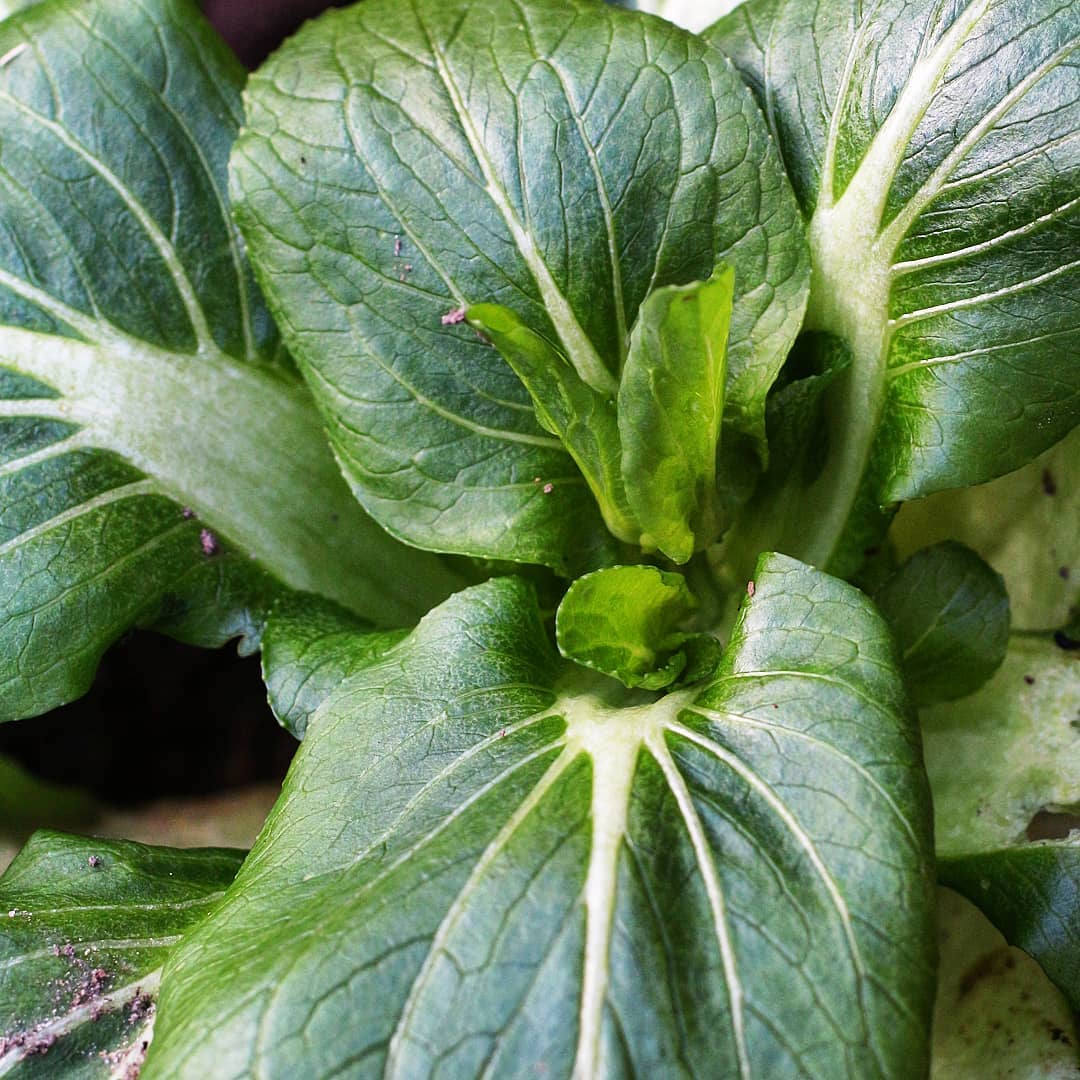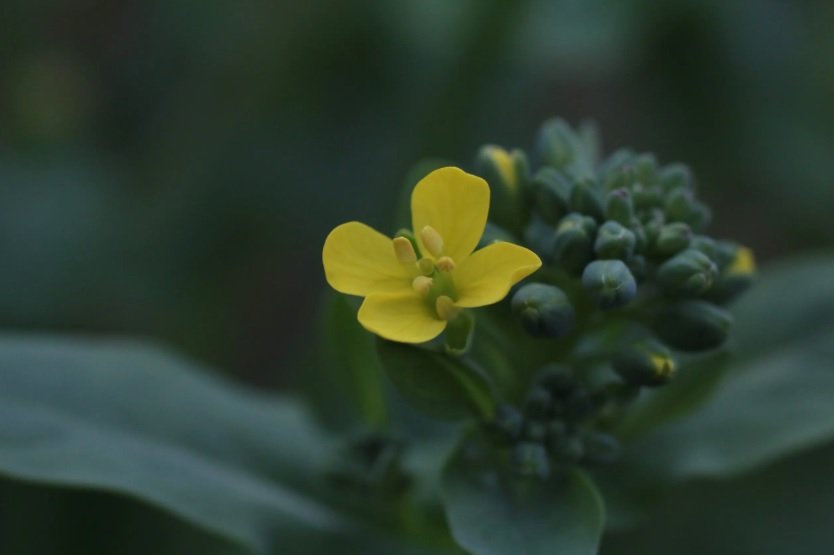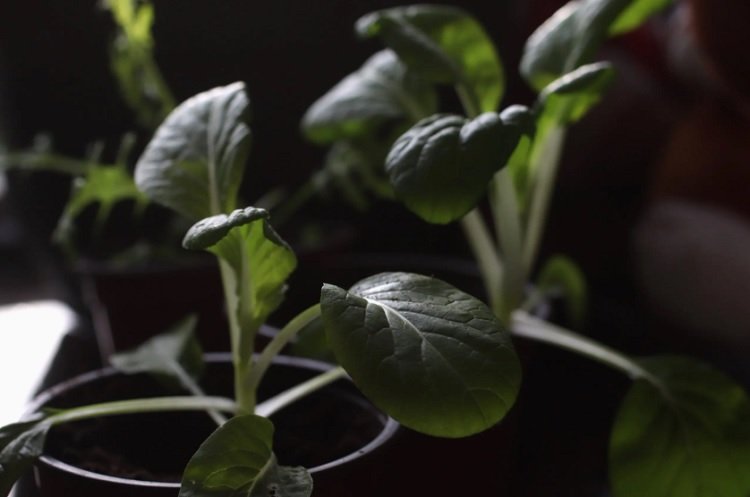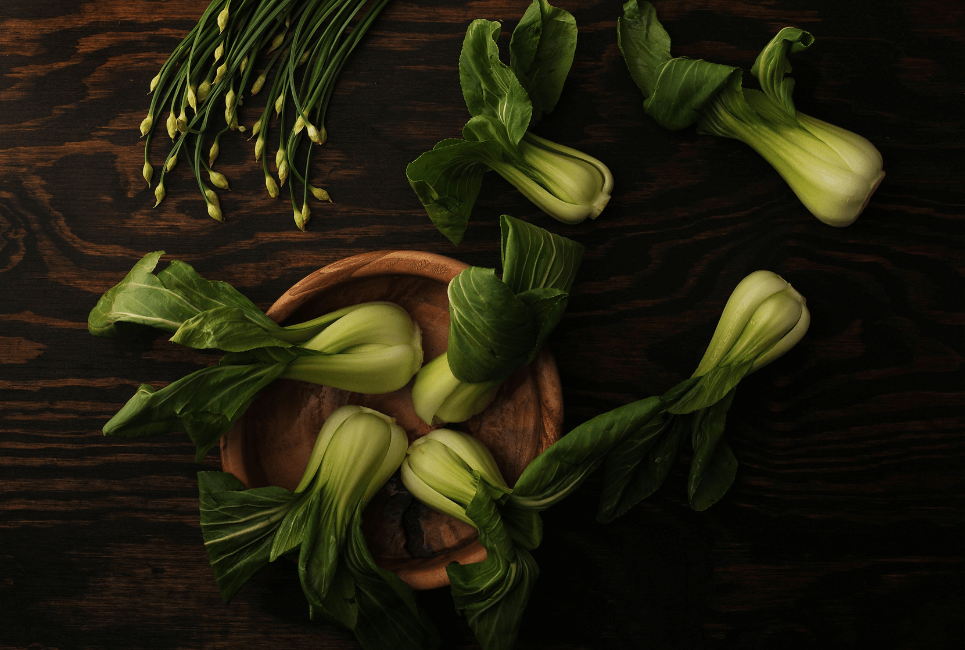- Growing Bok Choy: How to Grow and Care for Bok Choy - December 9, 2020
- Growing Snow Pea: How to Grow and Care for Snow Pea - November 4, 2020
- Growing Fennel: How to Grow and Care for Fennel - October 22, 2020
Also commonly known as pak choi, bok choy is a type of Chinese cabbage that’s so versatile in the kitchen. From its baby leaves to its full-sized heads, bok choy can be eaten both cooked or raw, and is surprisingly easy to grow at home.
What’s So Great About Bok Choy?
With its subtle peppery flavor and crisp, crunchy texture, bok choy, which originates from China, makes for a tasty addition to a wide variety of meals.
It also happens to be an extremely nutrient-dense vegetable, with high concentrations of vitamins, minerals, and antioxidants.
Bok choy plants are easy to care for, and you can start harvesting them in as little as six weeks, making it worth purchasing some bok choy seeds and having a go at growing your own.
Buying Bok Choy Seeds
There are two main types of bok choy and several varieties of each:
- Standard white – the classic white-stemmed version with dark green, textured leaves
- Green “Shanghai” – the green-stemmed alternative with slightly flatter leaves
Whether you’re looking for fat and sweet white stems, low-growing plants that form tight rosettes, or vivid red foliage, each variety will have something unique about it. They will also be suited for different growing conditions, so keep your garden’s temperature, soil type, and light levels in mind when choosing seeds. Check out our full guide on how to grow and care for your garden here.

When to Sow Bok Choy Seeds
Bok choy is a cool-weather crop, meaning that it does best in the fall. If you try to grow it in the warmer months, it will take on a tall and spindly shape before quickly flowering, which gives the plant a tough texture and a bitter taste.
While mature bok choy plants are able to tolerate some frost, young plants and seedlings will end up damaged, so you need to get your timings right when it comes to sowing seeds.
Keep in mind that bok choy seeds germinate quickly – you will usually see signs of life appearing about a week after sowing.
When to Sow Bok Choy Seeds for a Fall Crop
Fall bok choy crops can be sown directly outside, about six to eight weeks before your first frost date.
Sowing seeds every two weeks will ensure that you have a regular supply to harvest.
When to Sow Bok Choy Seeds for a Spring Crop
Since bok choy seedlings can’t tolerate the frost in the same way that mature plants can, you can’t sow seeds for a spring crop directly outside. If you waited until the soil warmed up enough, temperatures would quickly rise too high for the bok choy to comfortably grow, leading to it bolting early.
Instead, you will need to start the seeds off indoors, about four or five weeks before your last frost date.
How to Direct Sow Bok Choy Seeds
Directly sowing seeds in the ground where you want them to grow is the easiest and fastest way to grow bok choy.
However, before you place those seeds into the ground, you need to first amend the soil. Bok choy requires nutrient-rich soil in order to thrive, so adding in some compost or well-rotted manure before sowing will give your plants a great start.
Make sure that your site also receives full sun if possible. Although bok choy can tolerate partial shade, your fall harvest will be significantly larger if your plants are exposed to sunlight throughout the day.
Once your site has been prepared, you can start sowing seeds.
Bok choy seeds need to be planted about half an inch deep, with each seed given about two inches of space.
As your plants grow, you will need to thin them out to give them about six inches of space each. However, you can wait until the plants have produced baby leaves before doing this so that you can eat your thinnings too.
Whether you sow your seeds in rows or place them strategically around other plants, cover each hole back over after sowing, and then water well.
How to Sow Bok Choy Seeds in Trays or Modules
Starting bok choy seeds off in trays or modules in your house can help to extend your growing season for a spring harvest.
Mix together some multi-purpose compost with a couple of handfuls of perlite or sand. This helps to lighten up the growing medium and encourage drainage, saving your plants from having to deal with rot. Place your growing mix into your seed trays, filling them to the top.
Then, use your finger to make small indentations in each seed tray, about half an inch deep. Place two seeds into each hole, before covering them back over and watering well.
Once your seedlings have been growing for a couple of weeks, pinch out the weaker one from each hole. Again, feel free to eat these microgreens – they make a great addition to salads!
Bok choy seedlings can be transplanted outside after your last frost date. However, make sure that you prepare the ground first, adding in some compost or well-rotted manure to give your seedlings all of the nutrients that they need.
One other thing to keep in mind when transplanting bok choy seedlings is light levels.
Fall crops do well in full sun since the sun isn’t quite as strong at that time of year. However, spring crops should be planted in partial shade – the cooler you can keep them, the longer your growing season will be.
Caring for Bok Choy Plants

Once your bok choy plants have been established outside and are happily growing, they won’t require much maintenance. However, you will still need to provide basic care, especially if you want big harvests.
Watering Bok Choy
Bok choy needs a consistent supply of water in order to properly grow.
If you allow your plants to dry out, they will end up bolting before they have matured.
Ideally, try to keep the soil around your bok choy consistently moist, but be careful not to over-water. You can check if your bok choy needs another drink by sticking your finger a couple of inches into the soil – if it feels quite dry, then it’s time for some water.
When watering your bok choy, aim your hose or watering can at the base of your plants, rather than watering the leaves from above. Try to keep the foliage as dry as possible, because wet leaves can encourage the onset of a number of diseases, especially if you water your plants in the afternoon or evening.
Fertilizing Bok Choy
If you amended your soil before your bok choy went in, then chances are that your plants won’t need to be fertilized during their growing season.
However, if you notice that the leaves are looking a little pale or yellow, then this could be a sign of a nitrogen-deficiency. Give your plants a good feed with nitrogen-rich fertilizer to bring back their vibrant green color and give them an extra boost.
Planting Companion Plants
As mentioned, bok choy requires a good supply of nutrients in order to flourish, including plenty of nitrogen.
One way to provide this without the use of a fertilizer is by planting some nitrogen-fixing plants around your bok choy. These plants work by absorbing nitrogen from the environment around them and then sending this deep down into the soil, where the roots of your bok choy will then be able to absorb it.
Some of the best nitrogen-fixing companions to plant around bok choy include:
- Garden peas
- Runner and French beans
- Soybeans
- Lupins
- Perennial sweet peas
- Clover
Try to plant your nitrogen-fixers at the same time that you sow or plant your bok choy so that everything can grow together.
Preventing Bok Choy from Bolting

If your bok choy plants keep bolting, then this means that their growing conditions aren’t quite right.
Bok choy will bolt when the plants get too hot or dry, so preventing this from happening is the key to keeping your plants healthy. This is why it is so important to get your timings right when sowing bok choy seeds.
In addition to ensuring that your bok choy is being consistently watered, providing some shade on hot days can also help, especially in the late spring and early summer. Whether you place some shade cloth around your growing area or put some taller plants in around your bok choy, managing light levels will go a long way in preventing bolting.
If you still can’t seem to stop your plants from bolting early, look into some of the bolt-resistant varieties out there, such as Joi Choi and Mei Qing Choi.
Pests and Diseases
Brassicas are known for being susceptible to a wide range of pests and diseases. Although bok choy is able to resist a number of these, there are still a few that could pose a problem to your plants.
You will need to regularly inspect your bok choy plants for signs of pests or diseases. If you notice that your plants aren’t looking quite right, take some photos for reference before turning to the internet for help in identifying the problem.
Some of the most common pests and diseases that affect bok choy include:
- Aphids
- Cabbage loopers and cabbage worms
- Slugs
- Flea beetles
- Powdery mildew
Again, companion planting is worth looking into for an organic way to keep pests and diseases at bay. For example, thyme and celery are great for deterring cabbage worms, while garlic and onions keep many aphids away.
Harvesting Bok Choy
Bok choy can be harvested at various stages – your very first harvests will be once you start thinning your plants and seedlings out.
Baby bok choy plants are deliciously tender. They can be harvested as soon as they have produced baby leaves, either by picking individual leaves off or by harvesting the entire baby plant.
Alternatively, wait until your bok choy has matured for a larger and more substantial harvest.
Its final size can vary depending on the variety that you are growing, but, generally, once the stems have firmed up, then this is a sign that your plants are mature.
Again, you have two options when it comes to harvesting:
- Cut and come again – this method refers to picking off whole leaves from the outside of the plant. By keeping the center of the plant intact, it will be able to continue producing more leaves. You will usually be able to enjoy about three to four pickings before you will need to harvest the entire plant.
- Cutting the whole plant – if the whole bok choy plant is what you want, then use a knife to slice it off at its base, slightly above the surface of the soil. Harvesting it this way, instead of simply pulling the entire plant out, will allow the plant to re-sprout from its base. Subsequent harvests from the same plant will be much smaller than the first, but it’s a great way to enjoy some extra bok choy without having to do any additional work.
FAQs
Large bok choy varieties will find a container too confining, but there are plenty of smaller varieties that will happily grow in pots. Some container-friendly varieties to look into include Baby Green Fortune, Green Revolution, White Dwarf, and Bonsai.
Holes in brassica leaves are a sign that a pest is eating away at your plants. Take a close look at your bok choy leaves, with a magnifying glass if necessary, to identify which pest is causing the problem. Don’t forget to check the base of each leaf, as well as the undersides, since many pests tend to hide in clusters in these areas.
Most bok choy plants are quite clean when harvested, especially if you have prevented water and soil from splashing onto the leaves. Simply rinsing your bok choy under running water will usually be enough, although you may also need to give the stalks an extra rub since dirt can sometimes gather in small crevices.
Although the flower stalks are a sign that your bok choy will now be much tougher and more bitter when eaten, those flower stalks themselves can be enjoyed in a meal. The flower heads taste best just before they have actually opened up, with a flavor reminiscent of broccoli.
Bok choy and spinach contain different nutrients, so it’s difficult to compare them. Although bok choy has a higher concentration of vitamins A and C than spinach, it doesn’t contain as much vitamin K.

Summary
It only takes a month after sowing for baby bok choy leaves to be ready for harvesting, or you could wait another month for mature heads. Either way, this speedy growth, combined with the vegetable’s low-maintenance requirements and beautiful flavor and texture, makes bok choy such a popular crop among home gardeners all over the world.

